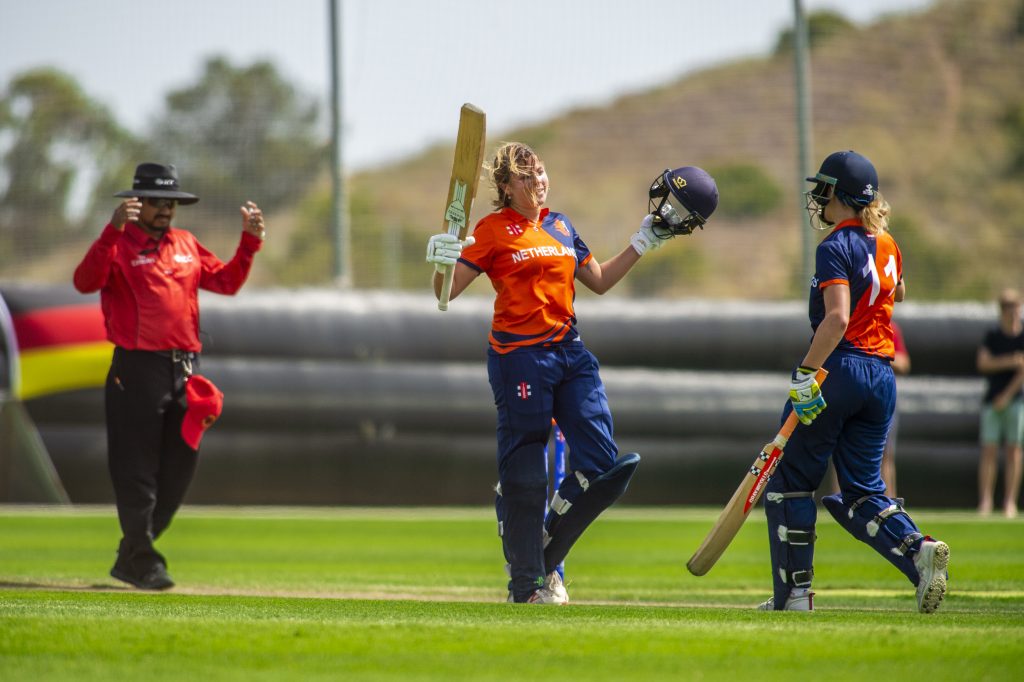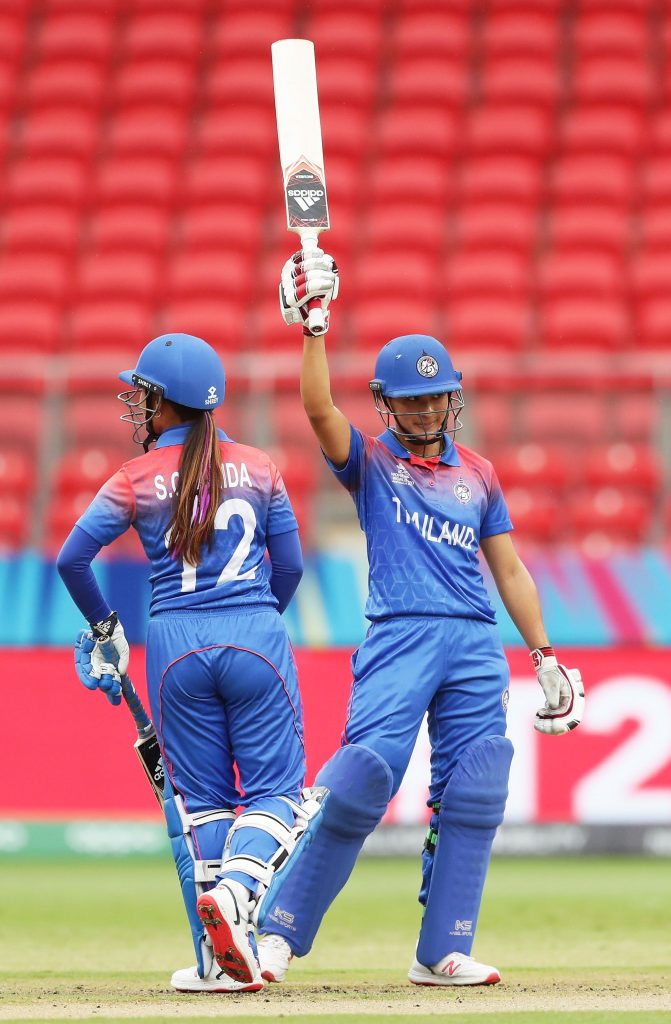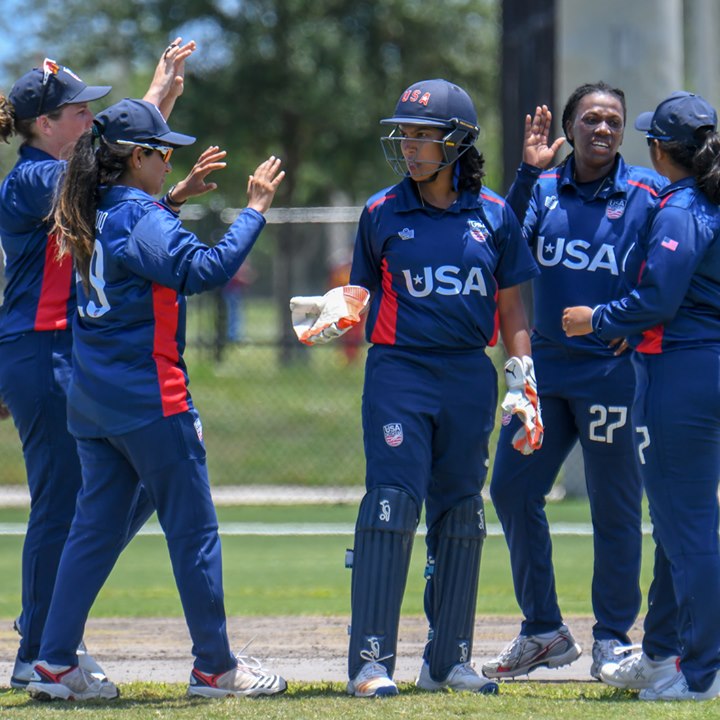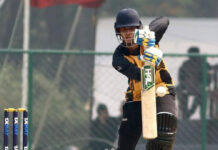
After two postponements and a change of venue from Sri Lanka to Zimbabwe due to the impacts of the Covid-19 pandemic, the ICC Women’s World Cup Qualifier begins today. Nine teams face off for three places in the 2022 Women’s Cricket World Cup in New Zealand, scheduled for early next year. Also on offer are two places in an expanded ICC Women’s Championship for teams who finish fourth and fifth in the Qualifier.
The top three sides in each group proceed to the Super Six stage of the tournament, where they will carry points from their group games, and play the three sides from the other group.
There will be no final or semi-finals, and standings at the end of the Super Six stage will determine qualifiers for the World Cup and the ICC Women’s Championship.
Emerging Cricket brings you six key tournament talking points ahead of the first delivery later today.
Papua New Guinea’s absence
Approximately two weeks ago, Cricket PNG announced that the PNG Lewas had withdrawn from the Qualifier because multiple members of the fully vaccinated playing group had tested positive for Covid-19.
Cricket PNG stressed that all possible options for participation had been exhausted, but that “we do not have enough players for the tour who can pass the Covid test required for flying internationally, leaving the Cricket PNG Board no option other than to withdraw the team from the tour today.”
PNG’s absence from the tournament is a devastating blow on so many levels, not least for the players and coaches, who have been preparing for months, and have not played an international competitive fixture for over two years. Although an extra rest day may be of value, PNG’s group opponents will no doubt feel aggrieved at losing an ODI fixture in an already sparse international calendar.
One also hopes that there are no serious ramifications for PNG’s sponsorship deal with Kumul Petroleum. With such high stakes in play, there are pertinent questions about what further precautions needed to be taken in order to prevent the outbreak.
Emerging stars aplenty
Which players in the four remaining emerging teams (yes we count Ireland) are expected to shine at the tournament? Can they do enough to take their sides to victory?
There is no shortage of talent in any of the ‘emerging’ teams at this tournament.
For the Netherlands, 25-year old Captain Heather Siegers now has ten years of international experience under her belt, and sits at the core of exciting nucleus of young players. Wicketkeeper Babette de Leede scored a belligerent 62 off 35 balls against Ireland earlier this year, and her knock of 53 off 97 balls in the official warm-up game against Bangladesh showed that she can bat time against good spin attacks. She and Sterre Kallis, fresh off a successful season in the Rachel Heyhoe Flint Trophy, will be at the centre of any big Dutch totals.

Ireland are a side reborn and rebuilt under the tutelage of Ed Joyce, particularly with the bat. Gaby Lewis hit 65, 96*, and 78 in a recent series against Zimbabwe, her first three fifties in ODIs, whereas Belfast school girl Amy Hunter, recently became the world’s youngest international centurion on the day of her 16th birthday.
Veterans Leah Paul and Laura Delany will play crucial all-round roles for the Irish, as will the Australian-born, former Hobart Hurricanes leg-spinner, Celeste Raack.
Thailand’s best players are now seasoned campaigners at the international level. Nattaya Boochatham will be expected to score quick runs at the top of the order, whilst also taking early wickets opening the bowling, a role she excelled in during the recent tour of Zimbabwe and South Africa.

Star batter Natthakan Chantham has been in imperious form, striking consecutive centuries against South Africa Emerging XI, and a fluent 52* against Ireland in an unofficial warm-up match, and she will be vital to Thailand’s batting fortunes. Watch out for the vastly improved batting of Chanida Sutthirunag, for young left-arm spinner Thipatcha Putthawong, and for medium-pacer Phannita Maya, both of whom impressed during the side’s tour to Africa in August and September.
The USA will look to left-arm seamer Tara Norris for early wickets with the ball. Norris brings considerable experience from the Rachael Heyhoe Flint Trophy and the Kia Super League into this side.
Former India Under-21 representative Sindhu Sriharsha captains the USA, and youngster Lisa Ramjit, who did not make the team for the recent ICC Americas Qualifier, scored a stoic 68 off 125 balls against Sri Lanka in the official warm-up game, highlighting the depth of talent available in the side.
Never say never for the Americans and the Dutch
The USA and Netherlands are the least experienced and fancied sides in the tournament. Both Head Coaches have been at pains to play down expectations of success at the tournament.
All else equal, the Dutch probably need a single win to qualify for the Super Six stage of the tournament. That win is most likely to come against Ireland, given the pedigree and experience of their other two opponents. A first T20I victory against the Irish earlier this year will give them huge belief, although a four-wicket loss to the USA in an unofficial warm-up game demonstrates that consistency remains a significant challenge. Should Sterre Kallis get going, anything is possible.

Probably the most improved side in the tournament, owing to the appointment of Julia Price as Head Coach, and the significant expansion of competition and talent identification programs at domestic level, USA still face a challenge progressing out of their group.
In order to make the Super Six stage, the USA will need to beat both Zimbabwe and Thailand. Both opponents are vastly more experienced and more familiar with the conditions in Harare. Both, however, are prone to batting collapses under pressure, and should the USA hold its own with the bat, close encounters are in order.
A four-wicket win against the Netherlands in an unofficial warm-up game provides a glimpse of the team’s potential.
Are Thailand and Ireland contenders for a place in New Zealand?
The longer 50-over format requires teams to possess depth in their ranks and execute their skills for longer periods in the course of a match. Although this makes upsets harder, they are certainly not out of the question.
Nonetheless, both Ireland and Thailand will be eyeing wins against their higher-ranked opponents in the Group Stage. Wins against Sri Lanka and Bangladesh appear more likely than against the West Indies and Pakistan respectively, simply owing to the fact that the Lankans and Bangladeshis have played very little cricket since the last T20 world cup.

Thailand’s spin contingent will be confident of limiting most teams to under 250, as they did against the West Indies in their official warm-up match. Similarly, with three scores out of four over 250 in their recent series against Zimbabwe, and a total of 192/8 against Ireland in their official warm-up match against Pakistan, Ireland’s batting breeds confidence.
Much then will depend on whether Thailand are able to put 200 runs on the board, and whether Ireland can limit opponents with the ball.
As hopeful as many are, it most likely that Thailand and Ireland will fight it out against each other for the last place in the expanded ICC Women’s Championship.
Under-prepared or over-prepared?
Teams come to the tournament with varying volumes and levels of competitive cricket behind them.
The following table highlights the number of international fixtures (including unofficial) for each participating side and the format in which they were played, since the T20 World Cup:
| Team | 50-Over | T20I | Total |
| Pakistan | 13 | 6 | 19 |
| West Indies | 14 | 11 | 25 |
| Sri Lanka | 1 | 0 | 1 |
| Bangladesh | 4 | 0 | 4 |
| Ireland | 5 | 11 | 16 |
| Thailand | 9 | 6 | 15 |
| Zimbabwe | 17 | 10 | 27 |
| Netherlands | 1 | 7 | 8 |
| USA | 1 | 6 | 7 |
In a stark U-turn from their international hiatus in 2018-2019, Zimbabwe (27) have played the most number of international fixtures since March 2020. This can partly be explained by the fact that teams have sought fixtures in Harare as part of their own preparations for the Qualifier, but also by the fact that Zimbabwe played seven games as part of the ICC Women’s T20 World Cup Africa Region Qualifier.
As expected from professional, Full-Member teams, West Indies (25) and Pakistan (19) organised bilateral series against each other, and against higher-ranked opponents such as England and South Africa.

Ireland (16) toured Zimbabwe and organised bilateral series against Scotland and the Netherlands (8). Unlike the Netherlands and the USA (7), both of whom only played T20Is, Thailand (15) had no qualifying fixtures scheduled, but invested significantly to organise a fifteen-match tour – with 9 ODs – of Zimbabwe and South Africa.
In contrast, Bangladesh (4) arrived early in Zimbabwe and played the hosts in a three-match ODI series, their first fixtures since the T20 World Cup in Australia last year.
Inexplicably and perhaps inexcusably, until their warm-up match against the USA two days ago, Sri Lanka (1) have not played in a single competitive international fixture since the onset of the pandemic. Compare this with volume of international cricket that their male counterparts have played, and you begin to understand how little women’s cricket is valued in these countries.
This fixture drought is partially offset by domestic competitions, a luxury that Associate teams seldom have,. This lack of fixtures could ultimately hurt Sri Lanka and Bangladesh at the latter end of the tournament. At the other end of the spectrum, Zimbabwe have lost their last six games, against Ireland and Bangladesh respectively, raising questions about fatigue and burnout.
Qualifying pathways
It seems strange to consider past and future World Cup qualifying pathways on the eve of such a consequential tournament, which demands a focus on the present. Nonetheless, here goes.
Five of the eight places in the ICC Women’s World Cup are determined by ODI ranking. Australia, England, South Africa, India, and New Zealand will therefore participate in the World Cup by virtue of ranking alone. By the same logic, West Indies, Pakistan, and Sri Lanka received automatic berths in the Global Qualifier.
The problem with this system is that only these eight countries participated in the last iteration of the ICC Women’s Championship. Only these eight teams had guaranteed international fixtures for the duration of the Championship.
Bangladesh, Ireland, and Zimbabwe possess ODI status, but cannot mandate higher-ranked opponents to play against them. As result, neither Bangladesh nor Ireland can get enough games against the top eight to improve their ODI rankings and be in contention for an automatic place in the World Cup.
Further down the rung, teams do not possess ODI status, and therefore cannot attain ICC ranking points, even if they miraculously manage to organise one-day matches against higher-ranked opponents. Thailand’s four 50-Over games against Zimbabwe in August where therefore classified as ‘unofficial ODs.’
Moreover, 50-Over games between Associates are not ranked, and therefore it is not possible to determine participation in Qualifiers by ranking. Therefore, participation in Global Qualifiers is determined by results in Regional Qualifiers, which by the way, are held in T20I format. Even so, T20I rankings, which now encompass all international results, are not used to determine participation in Global Qualifiers.
Not only should Qualifying events be held in 50-Over format, the ICC should standardise the status of all one-day internationals, thereby allowing lower-ranked Full Member nations and Associates to improve their rankings.
Although the addition of two teams into the ICC Women’s Championship fixture list is positive, the ICC must ultimately push for World Cups with up to sixteen teams, thereby potentially enabling teams (and markets) such as Nepal, Brazil, and China to participate.
You’re reading Emerging Cricket — brought to you by a passionate group of volunteers with a vision for cricket to be a truly global sport, and a mission to inspire passion to grow the game.
Be sure to check out our homepage for all the latest news, please subscribe for regular updates, and follow EC on Twitter, Facebook, LinkedIn and YouTube.
Don’t know where to start? Check out our features list, country profiles, and subscribe to our podcast.
Support us from US$2 a month — and get exclusive benefits, by becoming an EC Patron.






